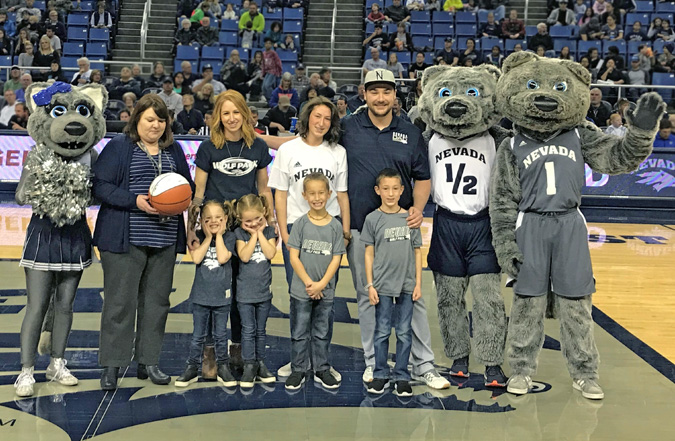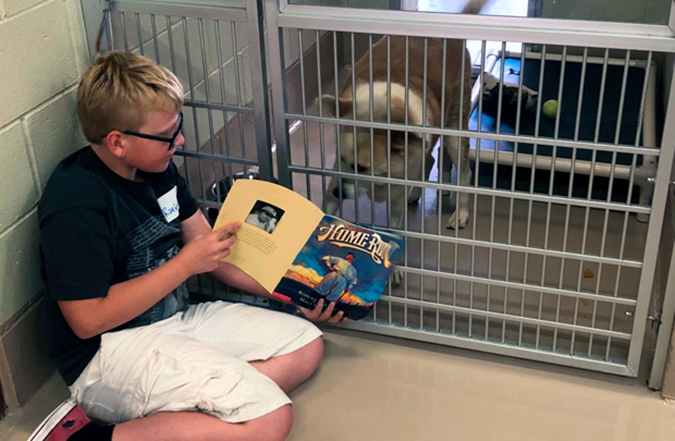
As anyone working in foster care and adoption knows, you cannot do this work alone. Effectively supporting families and ensuring the safety of children in care takes a proverbial village. Partnering with organizations—including faith groups and businesses—helps states and agencies stretch precious resources and improve their service to children.
Washoe County, Nevada, has been partnering with organizations in their community to recruit foster families and match teens at risk of aging out with mentors for more than five years. We talked with Mikie Franklin, foster care placement, recruitment, and training supervisor, about how the effort is creating permanent connections for kids in care and how they’re adapting during the COVID era.
Your first partnership was with the University of Nevada, Reno. What made you choose them?
We don’t have any professional sports teams in northern Nevada, so our college team events are really well attended. We thought that partnering with their athletic department would be a great way to get in front of a lot of people. Once we started talking, it seemed like a great fit. They were even more supportive of our cause than we anticipated, and it turned out that a few of the coaches had fostered and adopted!
What did that partnership with the university look like in the beginning?
We started the partnership in 2015 using adoption assistance funds to sponsor a football game in November. That gave us a lot of publicity during National Adoption Month—on local TV and radio and the school’s website and at the game, where we had tables and signage around the stadium.
We made a day of it for our families too. We invited them to a special tailgate party, and recognized some of our longtime families with prizes and tickets. Some of the coaches came and spoke. It was a great way to make our families feel recognized and rewarded. I think the relationship has been invaluable in helping us both recruit new families and retain the families we have.
Of course, things look very different right now. We’re currently re-evaluating the contracts with the university and trying to figure out what the partnership looks like if they don’t have fall sports.

What other organizations have you partnered with?
We have several organizations that help with our outreach events:
- Our local SPCA hosts “mentor mixers,” where we match teens at risk of aging out of care with adults who aren’t ready to commit to fostering but want to be involved in a child’s life. At the animal shelter, kids and adults can do things like read to the dogs and make doggy treats while interacting naturally. We’ve had several kids end up with mentors through those events. And who knows? Maybe some of those relationships will grow into adoption someday.
We aren’t doing in-person mixers right now, but we’re going to start doing mixers online, inviting people who are licensed and kids’ workers join a Zoom. We think it will still be a good way to make those connections and let interested adults learn more about the kids.
- Community centers and Boys and Girls Clubs were holding quarterly foster parent orientations in communities where we have large number of kids being served. We’d advertise the orientations in the schools and zip codes where we remove the most children from by distribute flyers that say things like, “Help keep kids in the same school…”
- Every month, a different business hosts a TV filming of our “Have a Heart” feature about a child who is waiting for a family. One of our last in-person segments was filmed at a glass-blowing studio, and now the owner is thinking about getting licensed! Now we’re recording segments via Zoom, and we’ve gotten a tremendous response to those shows!
How much staff time is involved in managing these partnerships?
I would say our recruitment staff spend a couple of hours a month on the partnerships.
What advice would you give to programs who want to partner with their business community?
Just do it! Don’t be afraid to ask. People want to help, especially if they are getting something out of it. In four years of asking local organizations to participate, I’ve never had anyone tell me no. The tricky part can be figuring out how they can help. But we always find a way.
Very importantly, thank them! Publicly recognize people’s contributions. Even if they say they don’t care about recognition, because they probably really do.
How do you measure the results of your efforts?
Like any kind of advertising, it’s hard to measure because people don’t always remember. About a quarter of people who come to our orientations tell us that they saw a flyer that we distribute at the university.
The most important figure that we can point to is that since we started partnering with local organizations four years ago, the numbers of people becoming foster parents has gone up by about 20 percent. We attribute most if not all of that growth to our partnerships because there’s nothing else that we’re doing differently.
I also think a testimonial to the success of the relationships that we’ve built that even in this COVID era, our recruitment numbers are holding strong. We’ve continued to have tons of people reaching out, and our numbers in classes haven’t decreased at all. We’ve been doing Zoom trainings, and they are going great.
We’ve had two online classes graduate so far. And honestly, I think we’ll continue to offer trainings this way after all of this ends. I think it’s been better in some ways, because everyone is in a home setting, instead of a classroom. They hold up their babies, you see them sitting at their dining room table. In those ways, you get to know people better.
What are your plans for the future?
It hasn’t happened yet, but I connected with the criminal justice program at our university and they are willing to offer credit to students who make a commitment to mentor a teen in foster care for at least three semesters. They see the connection between kids lacking connections and later criminal-justice involvement and, like everyone, they are eager to help.
As far as COVID goes, we’ll continue to be creative in finding the kinds of work-arounds I’ve mentioned. Ultimately, I think our recruitment and retention efforts will be stronger for it.